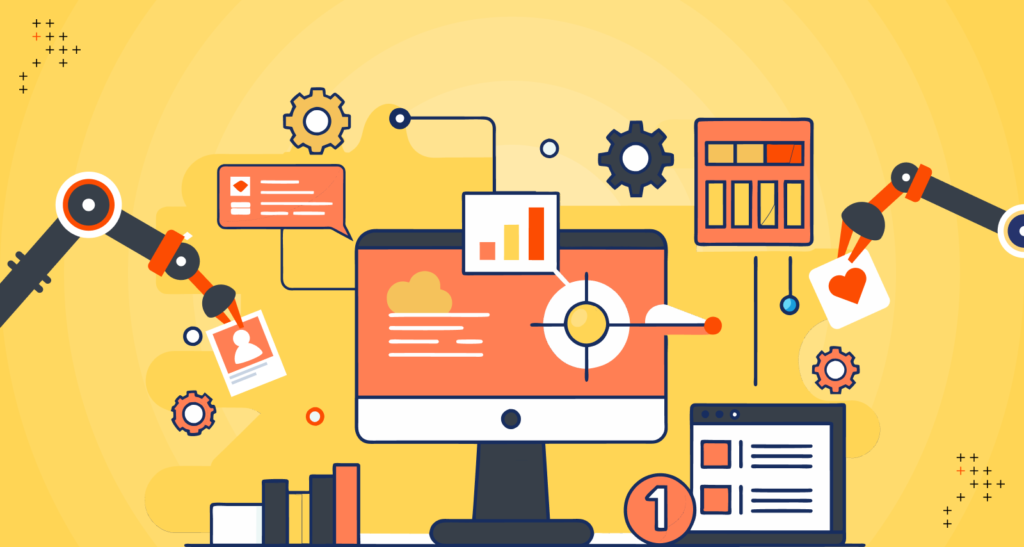Managing HR operations can often feel like an endless cycle of paperwork, emails, and manual tasks. From onboarding new employees and maintaining records to managing time-off requests and processing payroll, HR teams face growing workloads that reduce their ability to focus on strategic initiatives. This is where human resources automation steps in to transform the way HR departments operate. By integrating AI automated software into daily processes, businesses can significantly reduce administrative burdens and empower their HR teams to focus on what truly matters—people.
Human resources automation leverages artificial intelligence and machine learning to streamline repetitive, time-consuming tasks that have traditionally required human effort. Functions such as employee data management, benefits administration, compliance tracking, and performance monitoring can all be managed more efficiently through automation. With the right AI automated software in place, HR professionals no longer have to spend hours on routine administrative work. Instead, they can redirect their energy toward improving employee engagement, building culture, and aligning talent with business goals.
One of the key advantages of adopting automation in HR is improved accuracy. Manual processes are prone to errors, especially when dealing with large volumes of data. An automated HR system reduces these risks by ensuring data is entered, stored, and processed consistently. This not only enhances compliance with labor laws and internal policies but also builds trust among employees who rely on accurate payroll and benefits information.
Another major benefit is faster decision-making. With human resources automation, data insights are readily available and updated in real-time. AI-powered dashboards and analytics tools can help HR leaders monitor workforce trends, identify performance gaps, and make informed decisions without the need for extensive manual reporting. As a result, organizations can become more agile and responsive to employee needs and market changes.
The employee experience also improves with the implementation of AI automated software. Self-service portals powered by automation allow employees to access their own information, submit leave requests, update personal details, and track performance goals—without needing to contact HR. This not only enhances employee satisfaction but also frees up HR teams to focus on more strategic responsibilities.
When it comes to onboarding, automation simplifies the process significantly. New hire paperwork, background checks, and document verification can all be handled digitally, providing a smoother and faster experience for new employees. HR teams can customize onboarding workflows, ensuring consistency across departments and reducing the chances of important steps being missed.
In performance management, automated tools help set clear objectives, send timely reminders for evaluations, and track progress throughout the year. These systems create transparency between employees and managers, enabling regular feedback and timely recognition, which are essential to workforce development and retention.
Compliance is another area where human resources automation proves invaluable. Keeping up with changing labor laws, tax regulations, and internal compliance standards can be overwhelming when done manually. Automation ensures that policies are applied consistently and helps flag potential issues before they become problems, reducing legal and financial risks.
Moreover, AI automated software can support workforce planning and forecasting. By analyzing historical trends and current workforce metrics, these systems help HR teams predict future hiring needs, identify skill gaps, and develop training programs proactively. This strategic approach to talent management ensures that the organization is always prepared to meet its growth and innovation goals.
Businesses that embrace automation in HR processes are also better positioned to scale. As organizations grow, so do their HR needs. Without automation, the HR department may become overwhelmed, leading to delays, inefficiencies, and employee dissatisfaction. Automating core HR functions makes it easier to manage growth without the need to increase headcount at the same rate.
Finally, cost savings cannot be overlooked. While there may be an upfront investment in AI automated software, the long-term savings in labor costs, reduced errors, and improved productivity make it a smart financial decision. Automation reduces dependency on manual processes, decreases the risk of non-compliance penalties, and improves overall operational efficiency.
In conclusion, human resources automation is no longer just a tech trend—it’s a necessity for modern businesses. With the power of AI automated software, companies can eliminate administrative overload, enhance employee experiences, and make data-driven decisions with confidence. As HR continues to evolve, automation will play a key role in shaping efficient, people-centric workplaces that are prepared for the future.


